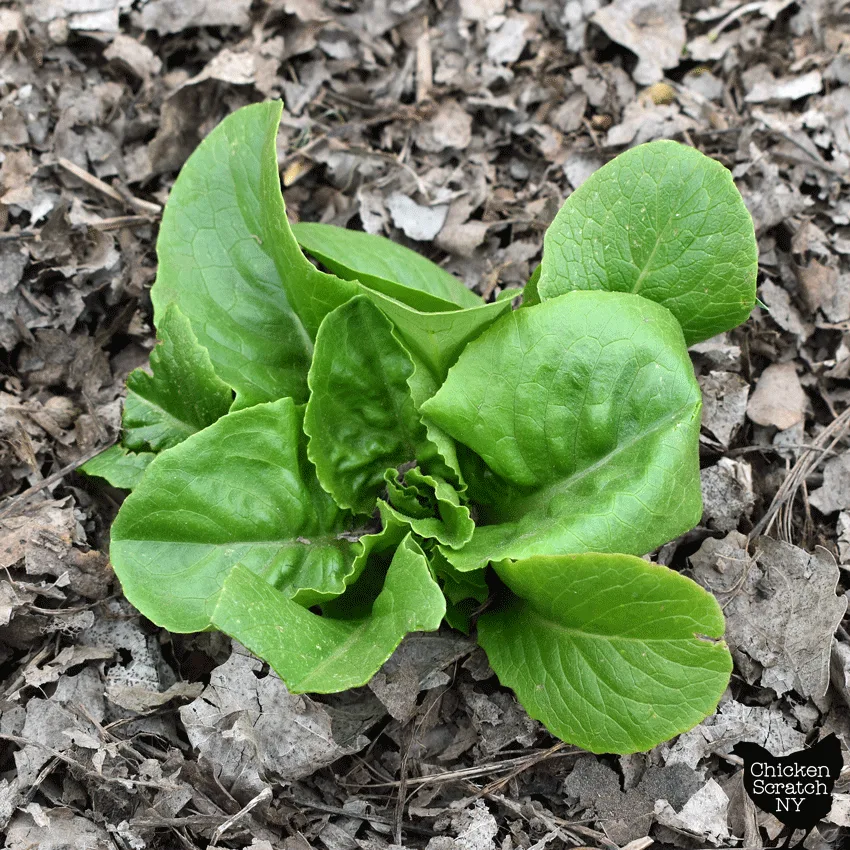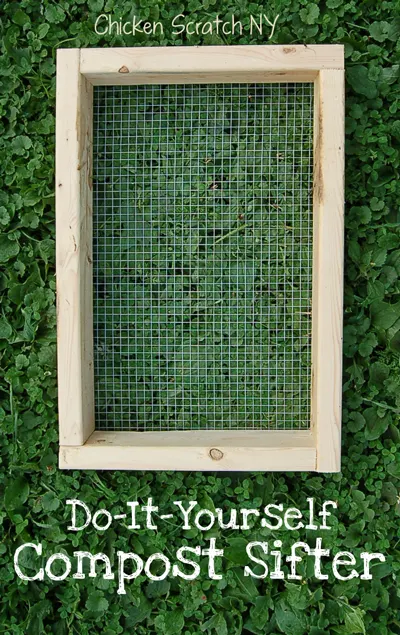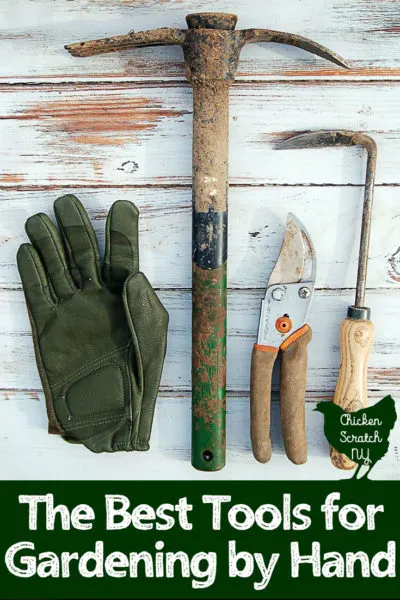Leaf Mold is a sustainable & abundant resource for all home gardeners. You can use it as mulch, add it to a seed-starting or potting mix and work it into the soil to improve texture and add nutrients, all for free!

You might be a little scared or a bit intrigued by the term ‘leaf mold’ and both options are ok. Leaf mold is just decomposed leaves.
If you walk through a wooded area and move aside the whole leaves on top, you’ll see the stuff closest to the ground is soft and crumbly. That is leaf mold and it’s full of carbon, nitrogen, phosphorus, potassium, and trace elements that help plants grow.
It is truly nature’s fertilizer.
How to Make Leaf Mold
I barely mow my lawn but when I do I use my electric mower with a handy little collection bag. Honestly, when I mow it’s usually because I’m after the clippings to mulch something like my peonies or fruit trees.
That little mower bag comes in extra handy when it’s time to make my leaf mold. My usual method is to wait for the wind to blow all the leaves into piles along the fence lines.
Then I ignore the leaves and let the chickens dig and scratch in them until the following spring. The leaves do break down a bit on the lawn but I still have plenty to collect for my bin.
If you’re more organized than me you can do this in the fall! I do recommend not mowing over super wet leaves, they stick together and will get all caked up on the blades.
The hardest part of this delayed process is waiting for a warm spring day when the leaves are dry enough to mow over. We have nearly constant rain in the spring which makes things fun.
I use a rake to pull all the leaves away from the fence into a pile, drop the deck on the mower, and mow over them. The mower chops up the leaves and jumpstarts the breakdown process.
When the bag is full, I dump it in my wire bin, add some water to re-wet the leaves, and wish it well. Then the leaves get to take a nice nap and break down for a year or two.
The leaf mold is ready to use when it’s soft and crumbly.
If you don’t have access to a massive amount of leaves on your property you can get creative. Many (if not most) people don’t want leaves on their lawns at all and you might be able to trade some raking for free leaves from your neighbors.
Collecting leaves from the side of the road is another option but it’s one I would avoid, you never know what’s been treated with herbicides and pesticides, and everything on the leaves will eventually end up in the garden!
How to Make a Leaf Mold Bin
The easiest way to make a bin for leaf mold is to get a long piece of hardware cloth, roll it into a circle, and zip-tie or wire it together. Hardware cloth is sturdy enough to hold its shape without any support.

If you want to use chicken wire you’ll need to add supports to the corners.
Stationary wire bins work really well for leaf mold because, unlike compost which requires access and needs to be turned regularly, leaf mold just sits for a year or two.
You can also skip the bin and just dump it in a sheltered area. If it gets too windy or rainy it will blow away and if you have chickens you won’t have a pile any longer!
Leaf mold is the ‘set it and forget it’ of the compost world. Set up a new bin each fall and by the end of three years, you’ll have a constant supply (and you can stop making bins!).
How to Use Leaf Mold
Leaf mold can serve a variety of purposes in your garden. I know, it sounds too good to be true, but I promise it’s not!
Soil Additive
If you’re after the nutrients in the leaves, the best way to get them into the soil is by spreading a layer of leaf mold and then working it in with a tined cultivator. I like my 5 tined Dewit Cultivator, it feels like something I could use to fight off a rabid attacker.
You can also find long-handled versions, they’re nice if you’re working in a larger area. Your goal isn’t to bury or pulverize the leaf mold, you just want it where the worms and microbes can do their work.
The leaf mold will add trace elements along with a minor boost in fertility and will work to improve the soil texture.
Well-rotted leaf mold (2+ years old and no longer looking like leaves at all) can be added into homemade seed starting mix or potting soil.
Mulch
You don’t have to dig the leaf mold into the soil to get all its benefits. Instead, you can just use it as a mulch or top dressing around plants including vegetables, herbs, flowers, and fruit trees & bushes.
According to just about every gardening book I’ve ever read, carrots are particularly fond of leaf mold.

One of my cardinal rules of gardening is to MULCH EVERYTHING. If you want a productive and low-effort garden you need to get on the mulch train.
Adding thick layers of straw to everything you plant can get expensive, so why not replace some or all of it with leaf mold?
Mulch helps keep the soil cool, prevents evaporation, stops weed seeds from taking root, and keeps all the soil dwellers happy and working.
A healthy garden is a living ecosystem and it’s much more than the plants you put in it. Earthworms tunnel and create better aeration while their poops turn organic material into fertilizer, which fungi break down even more material into rich soil.
Both prefer to work in cool soil where they’re protected from the hot rays of the sun. A habitat easily provided by a thick layer of leaf mulch!
The leaf mold around this lettuce plant is barely broken down but I needed something and there was a pile of leaves calling my name. I raked up a bunch od dried leaves and rubbed them through my compost sifter before placing the leaf matter around the lettuce.
Check out my Vegetable Garden page for more ideas or start here:



